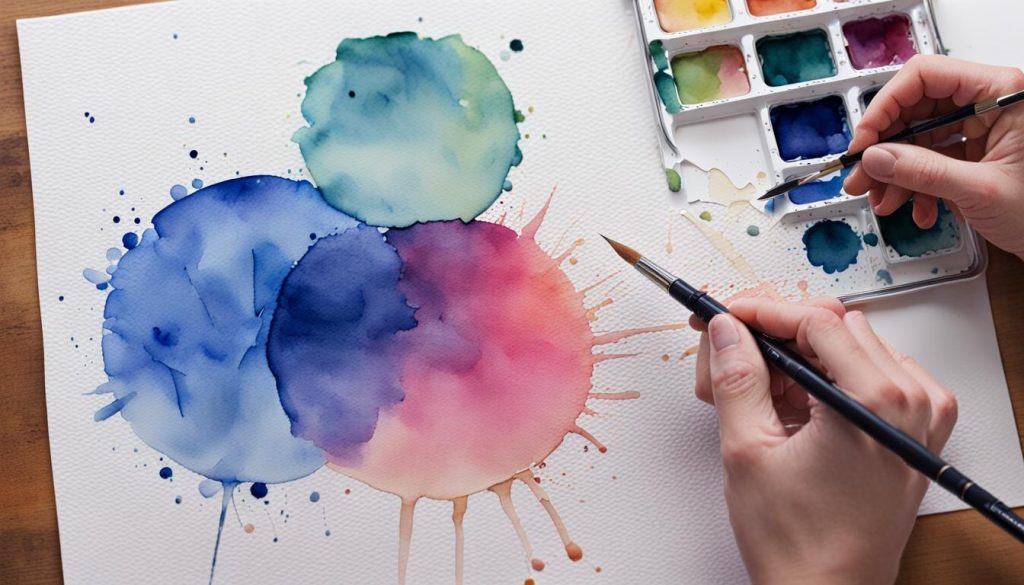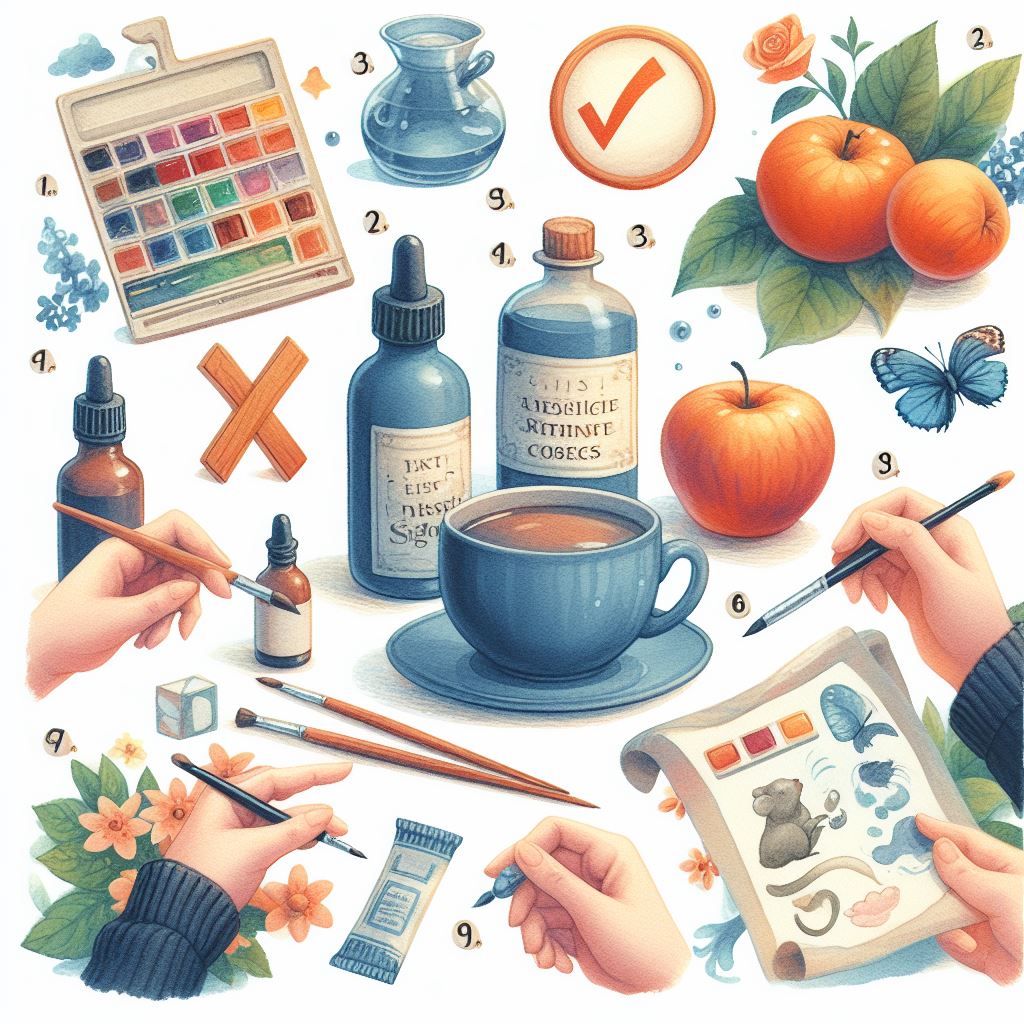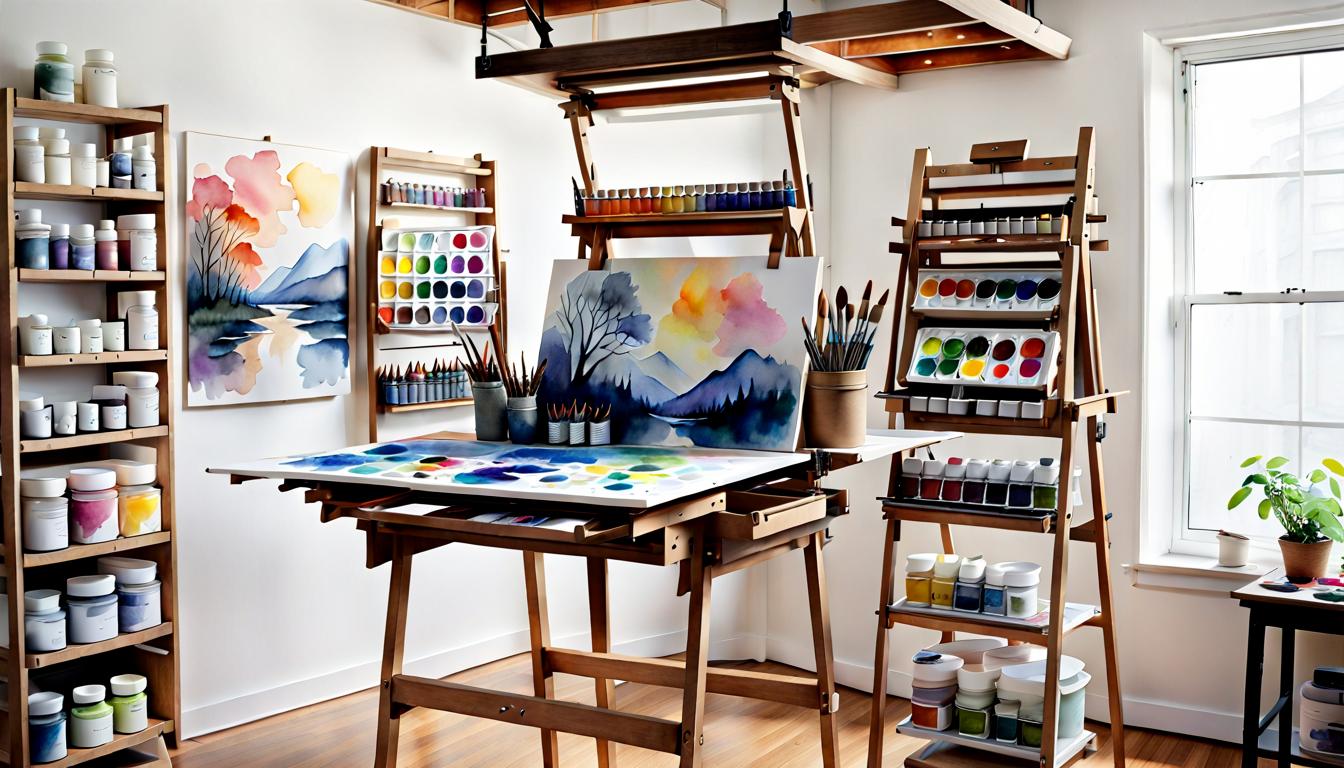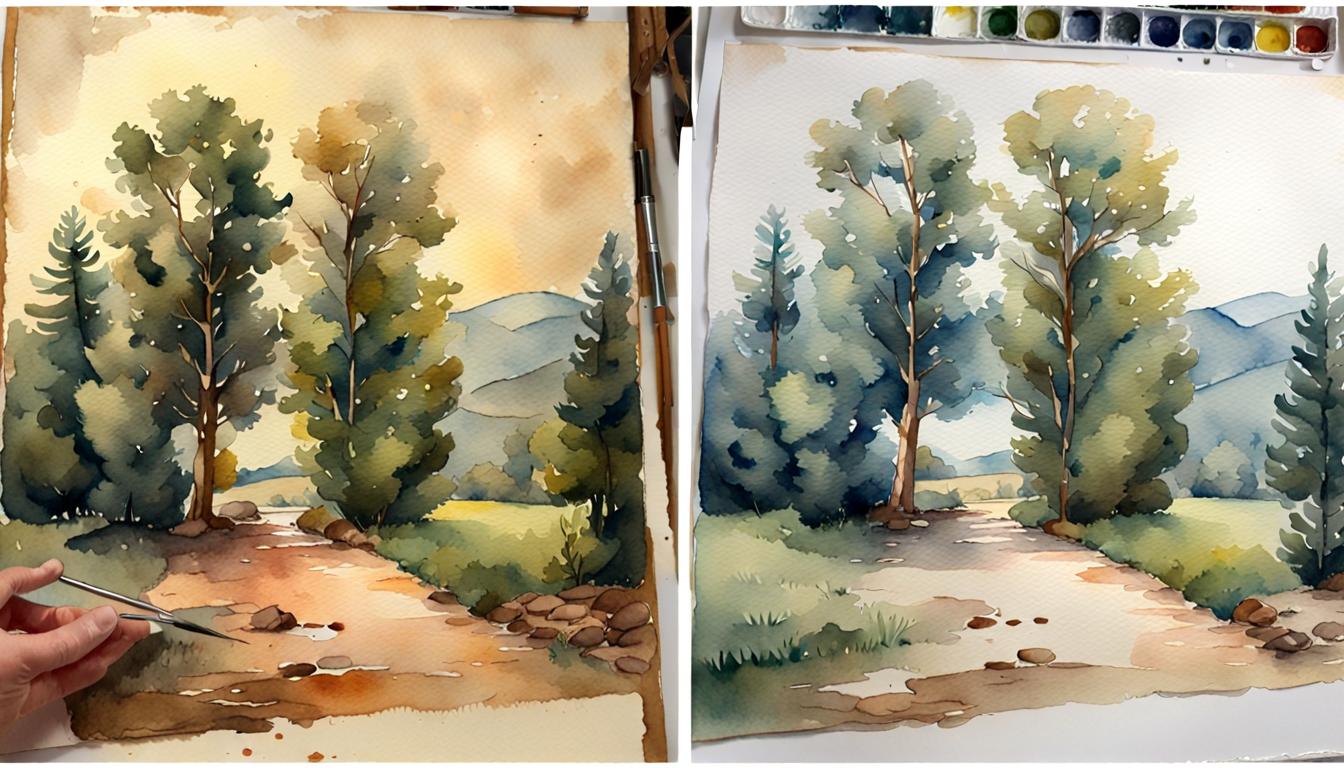
Watercolor painting can seem intimidating for beginners, but with the right techniques and strategies, anyone can achieve beautiful results. This guide covers essential watercolor painting tips and tricks to get you started.
Understanding Materials
The three basic watercolor materials are pigment, water, and paper. Water is used to move the pigment around and control how dark or light the colors appear. Using the correct paper is important – watercolor paper is rough to absorb water without buckling or tearing.
Some key watercolor supplies to have on hand include:
- Brushes – You’ll need round and flat brushes of various sizes for different effects. A size #10 or #12 round is a good general brush.
- Paints – Professional grade pans or tubes in a basic palette of primary colors will give you the most versatility. Brands like Winsor & Newton or Daniel Smith are ideal.
- Palette – Choose a palette with wells for mixing colors or a plastic palette pad that can fold up. This allows you to control the mixing of colors.
- Rags or paper towels – For cleaning brushes and absorbing excess moisture.
Understanding the properties of pigments, papers and brushes will help you effectively apply “tips and tricks for watercolor painting” techniques.
Wet-on-Dry vs. Wet-on-Wet Techniques
The two basic techniques in watercolor painting are wet-on-dry and wet-on-wet. Wet-on-dry involves painting dry pigment onto a dry surface, allowing for more control but harder edges. Wet-on-wet is painting pigment onto a wet surface, causing colors to blend in interesting ways on the paper in a more fluid, softer style.
Mastering both techniques allows for more creative options. For example, laying down a wet-on-wet wash for the sky, then painting precise tree branches or buildings wet-on-dry on top. Experimenting with layering the techniques provides endless possibilities.
Controlling Color and Value
Two important aspects of successful watercolor painting are color mixing and value control. Understanding how to lighten or darken colors opens up limitless options. A few tips:
- To lighten, add water or mix with the paper’s natural color
- To darken, layer color or add a complimentary color for a grayed effect
- Test color mixes on a scrap of paper first
- Leave some white of the paper showing for highlights
With practice, you’ll gain an intuitive sense of how colors will blend on the page. Taking time to consider color and value will elevate your paintings.
Composition and Design
Strong composition is key, whether painting landscapes, still lifes, or portraits. Some simple rules of composition to keep in mind include:
- The rule of thirds – Imagine a 3×3 grid and place subjects along the lines or their intersections.
- Lead room – Leave space in front of subjects looking into the picture for a sense of depth and movement.
- Framing devices – Use elements like branches or windows to frame and direct the viewer’s eye.
- Simplify – Eliminate unnecessary details and focus the viewer’s attention.
Paying attention to “tips and tricks for watercolor painting” composition from the start leads to dramatic, eye-catching paintings.
Handling Mistakes and Fixes
Even professional artists make mistakes! With watercolors there are techniques for fixing errors:
- For light areas, a clean brush and water can lift colors while still wet.
- Cobalt blue, burnt sienna or orange can disguise or blend areas that are too dark.
- Masking fluid allows painting around protected areas after initial layers dry. Remove with a rub of the finger.
- A rinsing of clean water over the whole painting can diffuse blooms and soften edges that are too stark.
- White gouache or acrylic paint can be used for small highlights after the painting is fully dry.
Don’t be afraid to make happy accidents – often unpredictable washes create beautiful effects.
Tips for Realistic Paintings
Realistic watercolor techniques require patience but can yield stunning results. Some keys include:
- Work from accurate line drawings or photo references of fine details.
- Use small brushes to define edges and details with a light touch.
- Work from light to dark, building up colors gradually in thin, translucent layers. Allow each layer to dry before adding the next.
- Observe how light falls on forms and cast shadows for dimension. Glazing darker colors over lighter layers mimics this effect.
- Add texture by mixing textured gels or airborne media into paint or layering flat and granulating pigments.
Applying a methodical approach leads to photo-realistic paintings with impressive depth and realism. Mastery develops over time with regular practice of techniques.
Finding Your Style
Ultimately, exploring different subjects and experimenting with diverse styles will help you find your unique watercolor voice. Try loose, sketchy styles or controlled, highly realistic techniques. Paint landscapes, still lifes, portraits – whatever inspires you. Developing your own style is a lifelong creative journey.
The tips and techniques shared here provide a solid foundation for beginners to build confidence with watercolors. Most importantly, have fun playing with this vibrant medium – making mistakes along the way is part of the learning process. With regular practice of these “tips and tricks for watercolor painting,” your skills will continue to grow.


